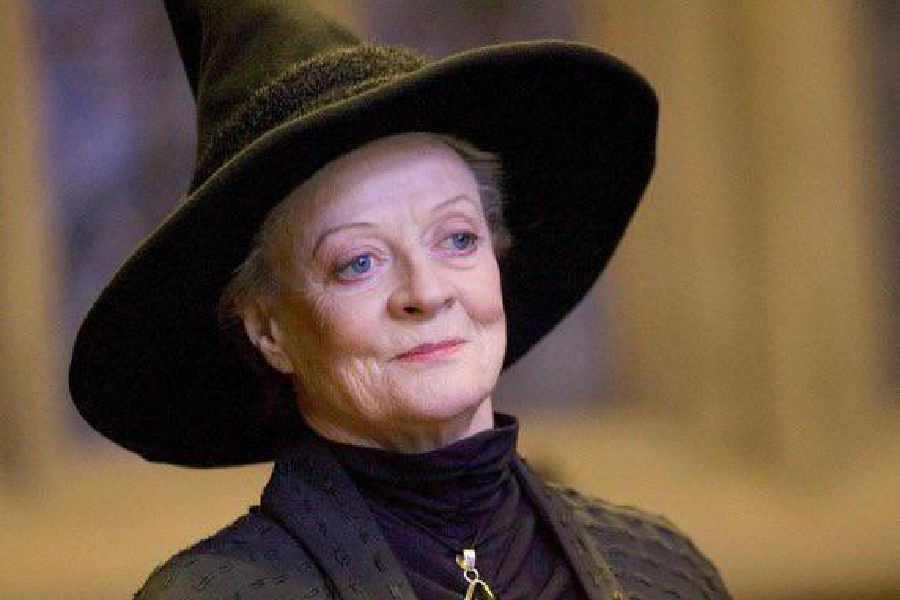Maggie Smith, one of the finest British stage and screen actors of her generation, whose award-winning roles ranged from a freethinking Scottish schoolteacher in The Prime of Miss Jean Brodie to the acid-tongued dowager countess on Downton Abbey, died on Friday in London. She was 89.
Her death, in a hospital, was announced by her family in a statement issued by a publicist. The statement gave no cause of death.
American moviegoers barely knew Smith (now Dame Maggie to her countrymen) when she starred in The Prime of Miss Jean Brodie (1969), about a 1930s girls’-school teacher who dared to have progressive social views — and a love life. Vincent Canby’s review in The New York Times described her performance as “a staggering amalgam of counterpointed moods, switches in voice levels and obliquely stated emotions, all of which are precisely right”. It brought her the Academy Award for best actress.
She won a second Oscar, for best supporting actress, for California Suite (1978), based on Neil Simon’s stage comedy. Her character, a British actress attending the Oscars with her bisexual husband (Michael Caine), has a disappointing evening at the ceremony and a bittersweet night in bed.
In real life, prizes had begun coming Smith’s way in the 1950s, when at 20 she won her first Evening Standard Award. By the turn of the millennium, she had the two Oscars, two Tonys, two Golden Globes, half a dozen Baftas (British Academy of Film and Television Awards) and scores of nominations. Yet she could go almost anywhere unrecognised.
Until Downton Abbey.
That series followed the Earl of Grantham (Hugh Bonneville), his mostly aristocratic family and his troubled household staff at their grand Jacobean mansion as the world around them, between 1912 and 1925, refused to stand still.
After its 2010 British premiere and its 2011 American debut, the show ran six seasons. Its breakout star, from the beginning, was Smith, playing Lord Grantham’s elderly and still stubbornly Victorian widowed mother, Violet Crawley, the dowager countess. She disapproved of electric lights, was unfamiliar with the word “weekend” and never met a person or situation she couldn’t ridicule with withering imperiousness. When her daughter-in-law considered sending a younger relative for a stay in New York, Lady Violet objected: “Oh, I don’t think things are quite that desperate.”
Suddenly, in her mid-70s, Smith was a megastar.
“It’s ridiculous. I’d led a perfectly normal life until Downton Abbey,” she told Mark Lawson at the B.F.I. and Radio Times Festival in 2017, adding later: “Nobody knew who the hell I was.”
The closest Smith had come to such visibility was with the Harry Potter movies. She was Minerva McGonagall, the Hogwarts School’s stern but fearless transfiguration teacher, in seven of the eight films, from Harry Potter: The Sorcerer’s Stone” (2001) to Harry Potter: The Deathly Hallows Part 2 (2011).
McGonagall, wearing high-necked Victorian-style gowns, a distinctive Scottish brooch, and upswept hair beneath a tall, black witch’s hat, was a striking onscreen presence. Yet Smith did not find herself constantly pursued in public, except by children.
“A lot of very small people kind of used to say hello to me, and that was nice,” she recalled on The Graham Norton Show in 2015. One boy carefully asked her, “Were you really a cat?”
Margaret Natalie Smith was born in Ilford, England, a town in East London, on December 28, 1934. Her father, Nathaniel Smith, was a public-health pathologist, and her mother, Margaret (Hutton) Smith, was a secretary who was born in Scotland.
When Maggie was 5, the family moved to Oxford, where her father taught. After studying at the Oxford School for Girls, she joined the newly formed Oxford Playhouse and made her acting debut in Twelfth Night (1952).
The urge to act had always been there. “It’s not even that you particularly want to be an actor,” she once said. “You have to be. There’s nothing you can do to stop it.”
Although Smith was in her early 20s when she appeared in her first movie (as a party guest in Child in the House, a 1956 drama) and made her London stage debut (in Share My Lettuce, a 1957 musical revue), it could reasonably be argued that she was never an ingénue.
Her early films included The V.I.P.s (1963), a Technicolor melodrama starring Elizabeth Taylor and Richard Burton, and The Pumpkin Eater (1964), a marital drama written by Harold Pinter. In the first, she was the mousy, adoring secretary of a handsome tycoon (Rod Taylor). In the second, she was Anne Bancroft’s weird houseguest who wouldn’t shut up — or leave. Both films were made before her 30th birthday, but both characters were, in their own ways, already world-weary.
Smith was just 37 when she starred in Travels With My Aunt (1972), playing Aunt Augusta from Graham Greene’s novel, an amoral world traveller in her 70s. New York was never a significant factor. After her Broadway debut, as a showgirl in New Faces of 1956, Smith stayed away for almost two decades.
Behind the quick wit, though, lay the heart of an introvert. On CBS’s 60 Minutes in 2013, when it was suggested that she had no interest in celebrity, Smith said: “Absolutely none. I mean, why would I?”
She had long described herself as painfully shy. Much earlier, in a 1979 interview with The Times, she confessed, “I’m always very relieved to be somebody else.”
In the 2018 documentary Tea With the Dames, an interviewer asked Smith if the first days on a movie set were still scary for her. “All days are scary,” she said.
New York Times News Service










